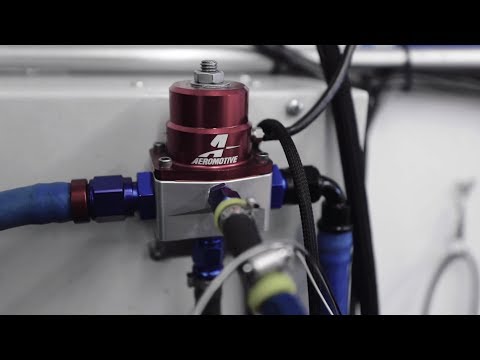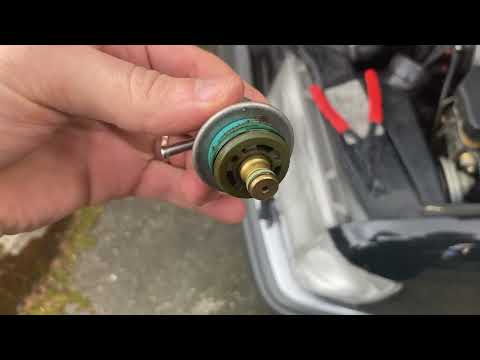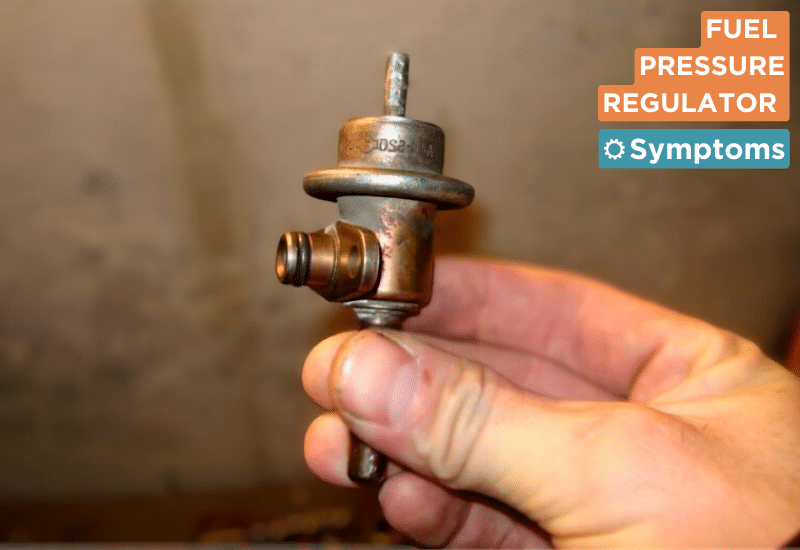
A bad fuel pressure regulator often starts out as seemingly minor things like a hard-starting engine, a rough idle with surprise stalling, and the engine feeling down on power. Left unchecked these problems can eventually lead to dangerous misfires, fuel leaks, and stalls that leave you desperately stranded.
Unfortunately, a lot of these bad fuel pressure regulator symptoms can also mimic other engine and fuel system problems. To truly find out if your car is suffering from a bad fuel pressure regulator, we’re going to have to push on into what it is, and what the symptoms are telling you about the state of your fuel system.
What Is A Fuel Pressure Regulator?
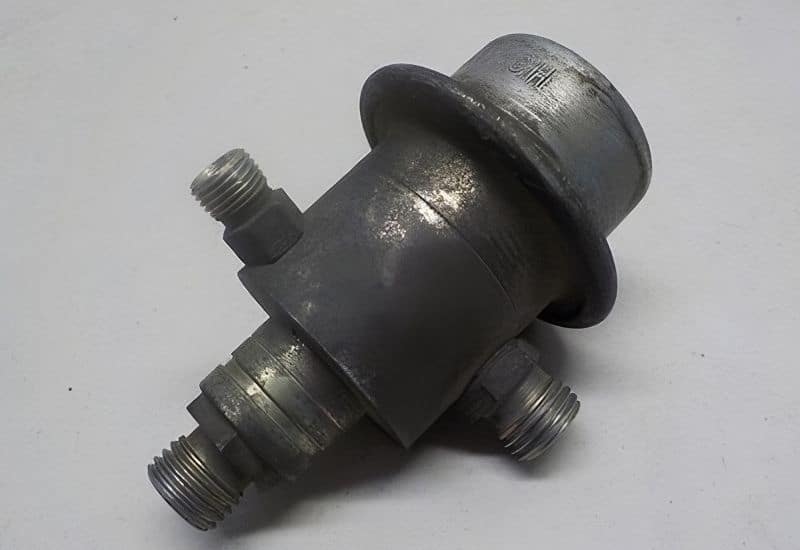
A fuel pressure regulator’s job is to ensure a consistent stream of pressurized fuel is delivered to the fuel rail for the fuel injectors. It works with the fuel rail sensor to ensure precise delivery of the correct amount of fuel to support the ideal fuel/air mixture for the given conditions.
It also ensures that the pressure is consistent so that the fuel delivered to the cylinders is atomized. This further supports the vigorous internal combustion process that cycles the engine.
How Does A Fuel Pressure Regulator Work?
A fuel pressure regulator works in tandem with the car’s ECU and the information it receives from the fuel rail sensor to deliver a precise, consistent flow of fuel to the fuel rail. Your car’s ECU sends a command to the fuel pressure regulator as part of the duty cycle to achieve and maintain the desired fuel pressure.
Inside the fuel pressure regulator, there’s a diaphragm that adjusts the pressure. It does this by controlling a special ball seat bypass valve. Anytime there’s a problem with the fuel pressure regulator or the fuel rail sensor it can affect the engine’s performance dramatically.
Symptoms Of A Bad Fuel Pressure Regulator
Early symptoms of a bad fuel pressure regulator like hard starting and a rough idle might be easy to miss or pass off in your mind as something different. Though in time they can become worse, leading to decreasing power, severe engine misfires, stalling, and other dramatic engine performance problems.
1. Car takes effort when Starting

Hard starting due to an imbalance in the fuel/air mixture is one of the earliest symptoms of a bad pressure regulator. The failing or leaking diaphragm inside the regulator can’t keep up with the duty cycle demands of the ECU, which makes it hard for the fuel injectors to support the kind of vigorous internal combustion needed to completely turn over the cycle of the engine.
A lot of times hard starting due can sometimes be mistaken for a problem with the starter motor, or a clogged fuel filter.
2. Car will feel Rough at Idle

Rough idling due to inconsistent fuel supply in the fuel/air mixture is another early sign of a bad fuel pressure regulator. This usually occurs in conjunction with hard starting. So, if you’re paying attention to both signs, it will help dispel the notion of it being a problem with the starter motor.
3. Frequent Stalling is also an early sign

Frequent stalling caused by insufficient fuel delivery to the fuel injectors is often a sign that the problem with the fuel pressure regulator is worsening. Especially if the stalling happens when you’re idling at the light and/or when you need to accelerate hard to get up to highway speed.
4. Engine Feels Increasingly Down on Power

When fuel can’t be delivered to the cylinders on time and with consistent pressure the weak internal combustion can make the car feel like it’s down on power. This is a problem that tends to worsen rapidly when the internal diaphragm fails.
It also tends to happen at terrible times, like when you’re accelerating hard to get up to highway speed. As the fuel pressure regulator continues to fail, you’ll start to notice more power and poor performance issues at low speeds, or even when starting out from the lights in city traffic.
5. Fuel Odors inside the car

A bad fuel pressure regulator with a failing internal diaphragm often causes fuel odors in the cab and/or in the engine bay. A lot of times with a problem like this, you might also notice rainbow stains on the pavement after you park on a rainy day.
6. Black Smoke in the Exhaust
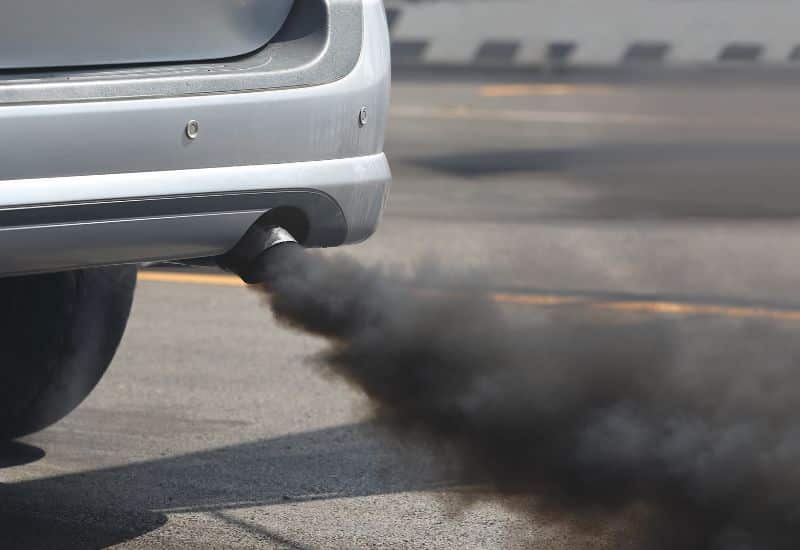
Black smoke in the exhaust usually indicates that unburned fuel is making it out of the cylinders into the exhaust manifold. From there it can pass into the catalytic converter and the rest of the exhaust system. This usually happens right as you notice a massive decrease in your car’s MPG.
7. you will notice Engine Misfires

Engine misfires caused by unburned fuel lingering in the cylinders and eventually migrating into the exhaust system. Driving a car with a misfiring engine can cause serious damage to the engine components as well as the catalytic converter and other parts of the exhaust system.
8. Check Engine Light comes on
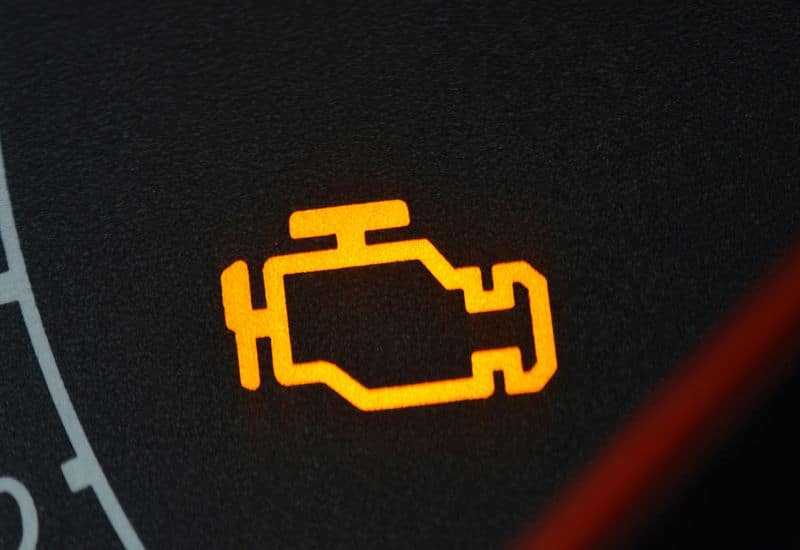
At some point the problem with the fuel pressure regulator will cause the ECU to turn on the check engine light. Different automakers have different tolerances for this, but the light usually happens when the engine starts stalling or misfiring.
Misfires might make the light flash several times and turn off. So, if you feel the engine misfiring, take a quick look down at the dash. Don’t assume that just because the check engine light went off again that the problem is gone.
When the check engine light comes on the ECU may throw a code P0089 which indicates a fuel pressure issue. This at least opens up the door to help you diagnose if the problem is just limited to a bad fuel pressure regulator or if other component failures such as a bad fuel rail sensor or failing fuel pump are also afoot.
Step-by-Step Guide to Test a Fuel Injection Pressure Regulator
To test your fuel pressure regulator you’ll need a fuel pressure gauge and some basic tools.
Fuel Pressure Regulator Location
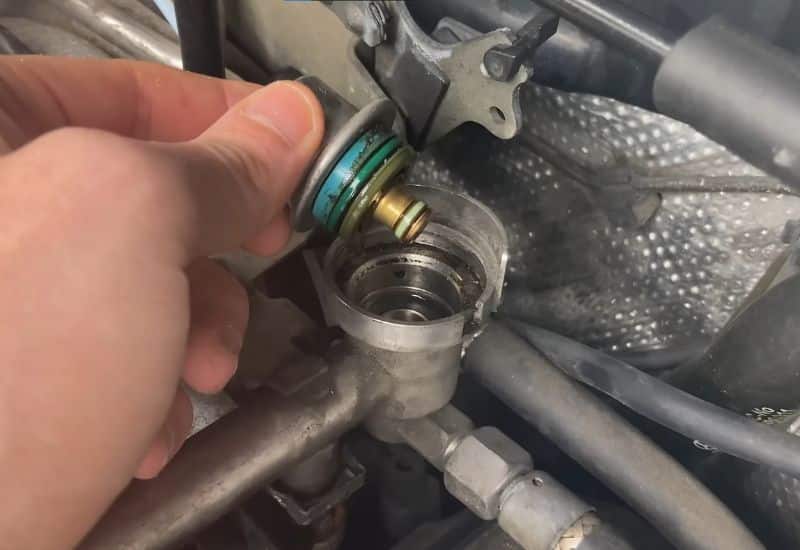
Most fuel pressure regulators are mounted near the fuel rail of the engine, or they are integrated into the fuel pump. If your car’s fuel pressure regulator is in the fuel pump assembly you’ll need a mechanic to test it safely.
Once you have a fuel pressure tester and you’ve located the fuel pressure regulator, you can then test it using the following steps.
For a fuel-injected engine, the reading should be between 45 to 55 PSI. If it reads below 40 or above 60, then you likely have a bad fuel pressure regulator.
If you find any fuel inside the vacuum line it likely means that the fuel pressure regulator’s diaphragm failed and is causing fuel leaks.
You should see the pressure reading drop by around 5 to 10 PSI. If it remains the same, the fuel pressure regulator is bad and needs to be completely replaced.
Fuel Pressure Regulator Replacement Cost
The replacement cost for a bad fuel pressure regulator can vary from as little as $300 to as much as $500 depending on if your car’s regulator is mounted on the fuel rail for easy access or if it’s integrated into the fuel pump. Of this the part cost for a replacement fuel pressure regulator range around $125 to $175.
If your car’s fuel pressure regulator is integrated with the fuel pump, the safest thing to do is have a professional mechanic replace it. Chances are good the fuel pump might also need to be replaced.
Follow these steps to Fix a Bad Fuel Pressure Regulator
If you consider yourself a competent DIY mechanic, and your car’s fuel pressure regulator is attached to the fuel rail, you might be able to replace it via the following steps.
Frequently Asked Questions
Is It Safe to Drive with a Bad Fuel Pressure Regulator?
Early symptoms like hard starting and a rough idle usually aren’t a major road safety risk. It’s when you start experiencing stalls, black smoke from the exhaust, fuel odors, and misfires that you are putting yourself and the engine at serious risk of danger.
Can I Replace a Bad Fuel Pressure Regulator Myself?
If the fuel pressure regulator is mounted on the fuel rail, and you consider yourself to be a modestly capable DIY mechanic, you might be able to test and replace a bad fuel pressure regulator. Though, if your car’s fuel pressure regulator is integrated into the fuel pump, it’s best to leave testing and replacement to a certified professional mechanic.
Conclusion
It’s easy to mistake the hard starting and rough idle of a failing fuel pressure regulator as something else that might not be a big deal. Though the problem tends to worsen rapidly as the internal diaphragm starts to fail.
If you notice other signs such as stalling, increasing down on power, black smoke coming from the exhaust, or engine misfires, then the wisest course of action is to park the car until you can get it fixed.
If your car’s fuel pressure regulator is mounted to the fuel rail, you can usually perform a fuel pressure test with a gauge, and some simple tools. If you have modest DIY mechanic skills, you might be able to replace a bad fuel pressure regulator for the part cost of $125 to $175 and an hour or two of your time.
If your fuel pressure regulator is integrated into the fuel pump assembly, or you feel that replacing it is outside your depth, then you can expect to pay a mechanic between $300 to $500 to replace it.

Written By
Jason Farrell
Jason Farrell is a certified master technician, the editor of Mechanic’s Diary in Pittsburgh, Pennsylvania. He is ASE (Automotive Service Excellence) certified and earned a Bachelor’s Degree in Automotive Technology from Pittsburg State University. With nearly 18 prior years of experience in the automotive field, he has extensive knowledge about Domestic, European, and other foreign makes and models of cars and light trucks. Jason’s experience working as a technician and service manager at dealerships, gave him the experience and know-how of most aspects of inspection, diagnosis, and repair from engine and drivability to electrical, HVAC, brakes, steering and suspension and everything in between.

